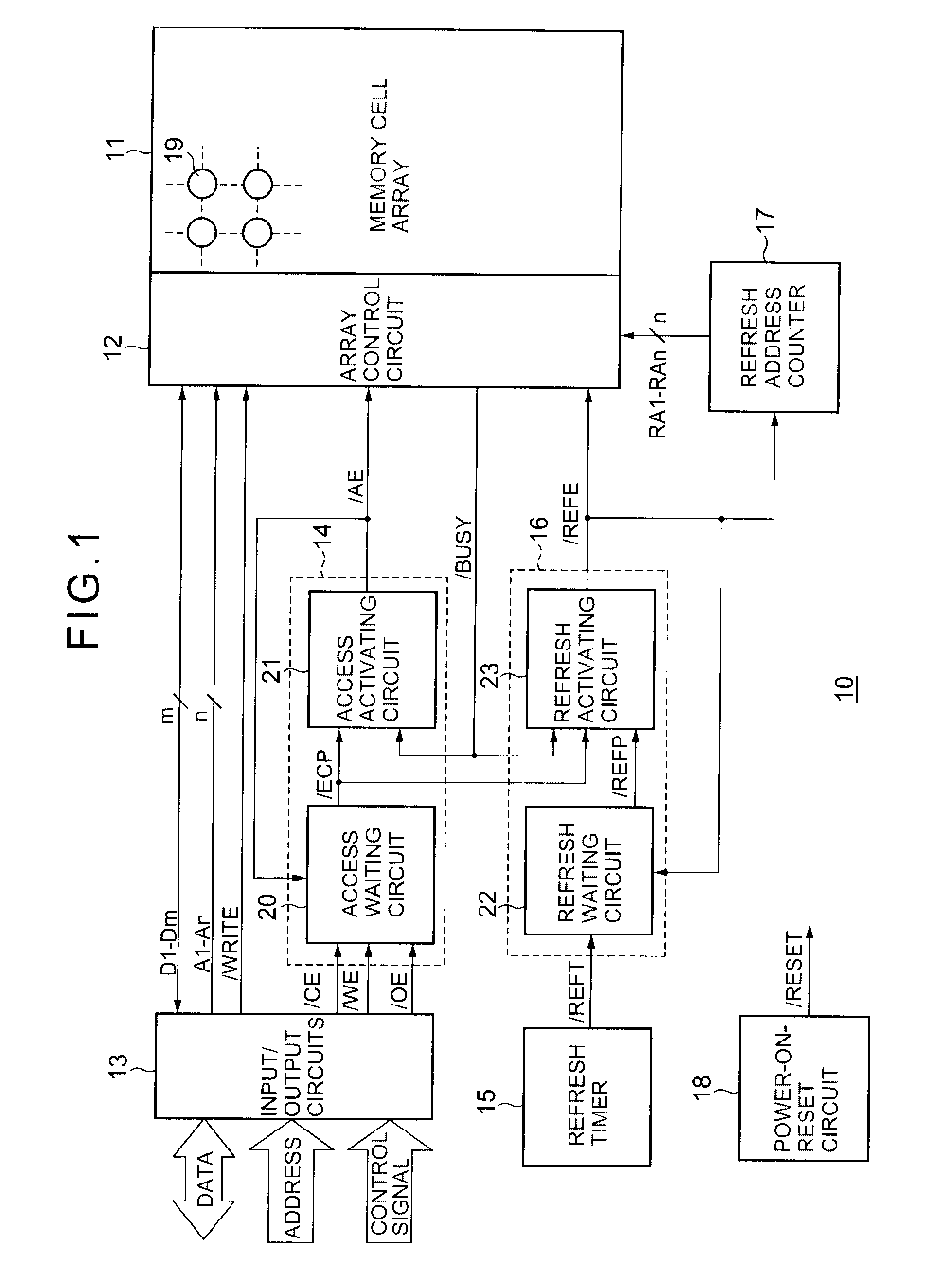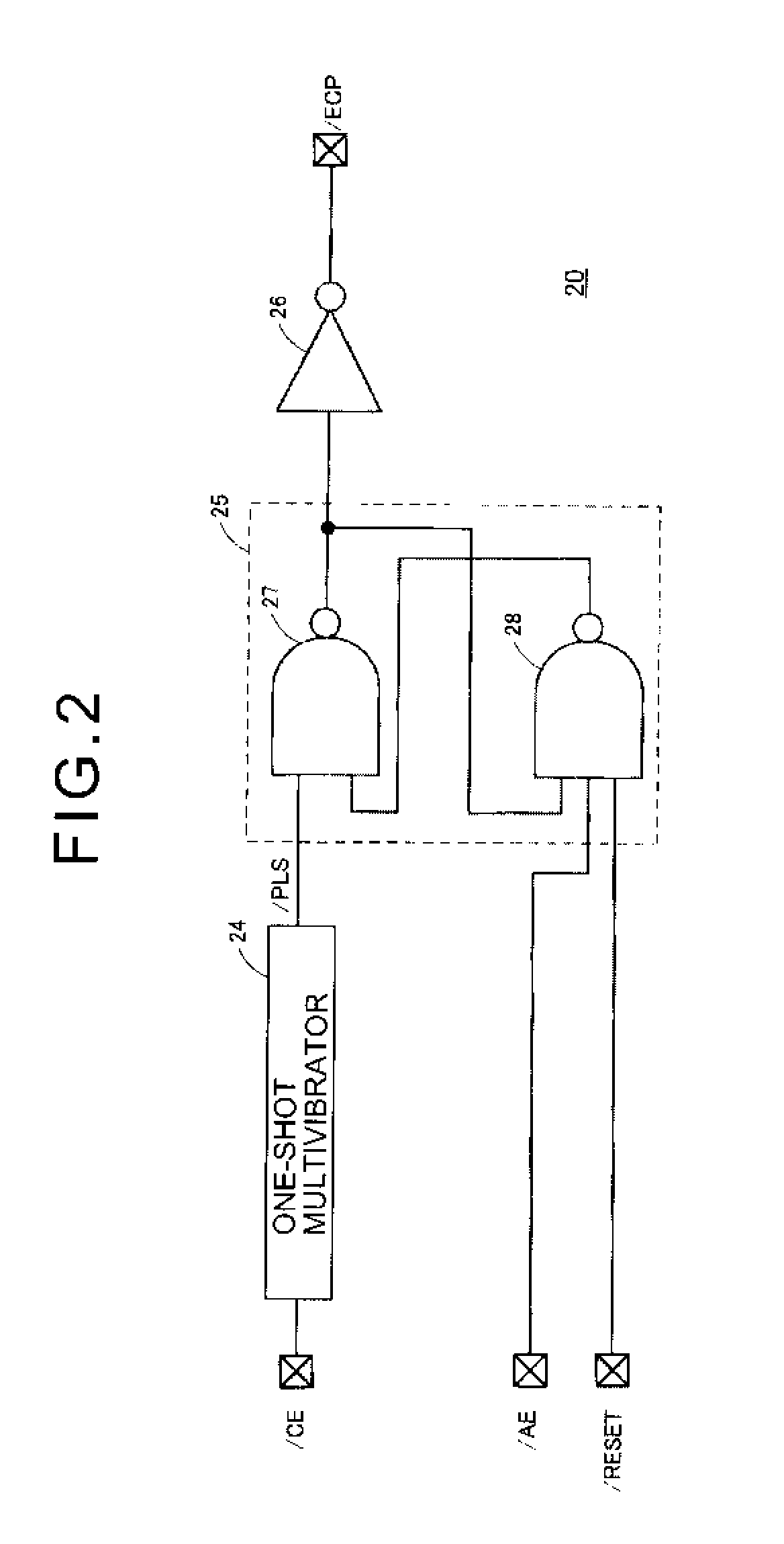Semiconductor memory device
a memory device and semiconductor technology, applied in the direction of information storage, static storage, digital storage, etc., can solve the problems of complex circuits, inability to perform refresh immediately when refresh becomes possible, and inability to prevent read instructions or write instructions from being sent, so as to increase the efficiency of external access and the effect of refresh
- Summary
- Abstract
- Description
- Claims
- Application Information
AI Technical Summary
Benefits of technology
Problems solved by technology
Method used
Image
Examples
first embodiment
[0034] Referring to FIG. 1, pseudo SRAM 10 according to a first embodiment of the present invention includes a memory cell array 11, an array control circuit 12, input / output circuits 13, an access control circuit 14, a refresh timer 15, a refresh control circuit 16, a refresh address counter 17, and a power-on reset circuit 18.
[0035] The memory cell array 11 includes a plurality of dynamic memory cells 19 arranged in matrix form. Each dynamic memory cell 19 consists of a transistor (not shown) and a capacitor (not shown), and stores 1 bit data by charging electric charge in the capacitor. The memory cell array 11 further includes a plurality of word lines (not shown) arranged in rows, and a plurality of bit line pairs (not shown) arranged in columns. The dynamic memory cells 19 are arranged at positions corresponding to intersections of word lines and bit line pairs.
[0036] The array control circuit 12 accesses the memory cell array 11 according to external address signal A1-An of...
second embodiment
[0066] Referring to FIG. 7, in the second embodiment of the present invention, unlike the aforementioned first embodiment, the refresh address counter 17 generates a refresh completion signal / MAX, when it finishes generating the last refresh address signal RA1-RAn. The refresh timer 15 keeps the refresh request signal / REFT at L level until the refresh completion signal / MAX is set to L level.
[0067] Next, burst refresh operation according to the second embodiment will be described.
[0068] Referring to FIG. 8, and in particular, part (a) of FIG. 8, when the refresh timer 15 brings the refresh request signal / REFT to L level, the refresh waiting circuit 22 will bring the refresh waiting signal / REFP to L level. Unlike the aforementioned first embodiment, the refresh timer 15 keeps the refresh request signal / REFT at L level until the refresh completion signal / MAX is set to L level. Therefore, when the refresh activating signal / REFE is set to L level, the RS flip-flop circuit 37 of...
PUM
 Login to View More
Login to View More Abstract
Description
Claims
Application Information
 Login to View More
Login to View More - R&D
- Intellectual Property
- Life Sciences
- Materials
- Tech Scout
- Unparalleled Data Quality
- Higher Quality Content
- 60% Fewer Hallucinations
Browse by: Latest US Patents, China's latest patents, Technical Efficacy Thesaurus, Application Domain, Technology Topic, Popular Technical Reports.
© 2025 PatSnap. All rights reserved.Legal|Privacy policy|Modern Slavery Act Transparency Statement|Sitemap|About US| Contact US: help@patsnap.com



